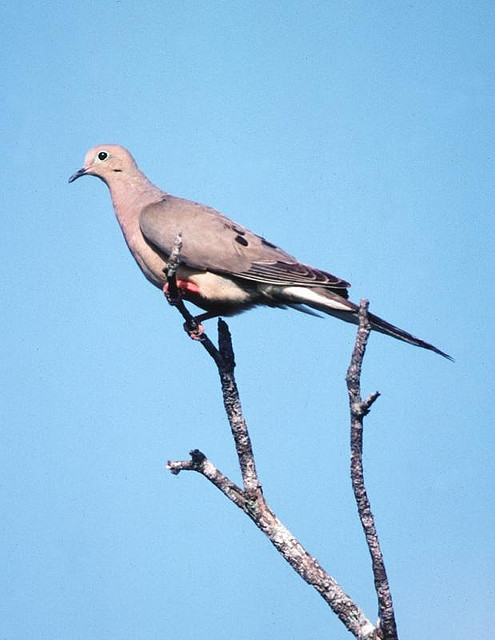Wildlife Research: Banding Mourning Doves
This is Passport to Texas
Mourning doves are the focus of an ongoing, nationwide banding study.
17—We’re banding mourning doves to determine harvest rates or percent of fall population taken by hunters. We’ll also determine survival rates, and where they go, and when they get there and when they leave.
Jay Roberson, wildlife research supervisor, said returned bands also help estimate population size – which ties directly into the national harvest strategy. He invited me to observe as he banded doves.
07—And we’re going to go and take some birds out of the traps and see what we’ve got and put the right band on the correct leg.
The trapped bird flapped excitedly as we approached. Jay covered the cage with an old blanket to calm the animal. Taking it from its cage, he brought it to a picnic table for banding with a small silver ring that fit easily around the bird’s leg.
14—Those are the bands for the adults and the unknown age birds. Now I slip the open band in the pliers over the lower leg. And now I’m going to crimp that pliers down until it closes.
After Jay determined the animal’s age, he transcribed the number of the band, the date and location into a book, and then released the bird.
If you harvest a banded mourning dove, report it by calling the number on the band. The Wildlife and Sport Fish Restoration Program program supports our show and provides funding for the Private Lands and Public Hunting Program.
For Texas Parks and Wildlife…I’m Cecilia Nasti



 Passport to Texas is a
Passport to Texas is a  Passport to Texas is made available by:
Passport to Texas is made available by: